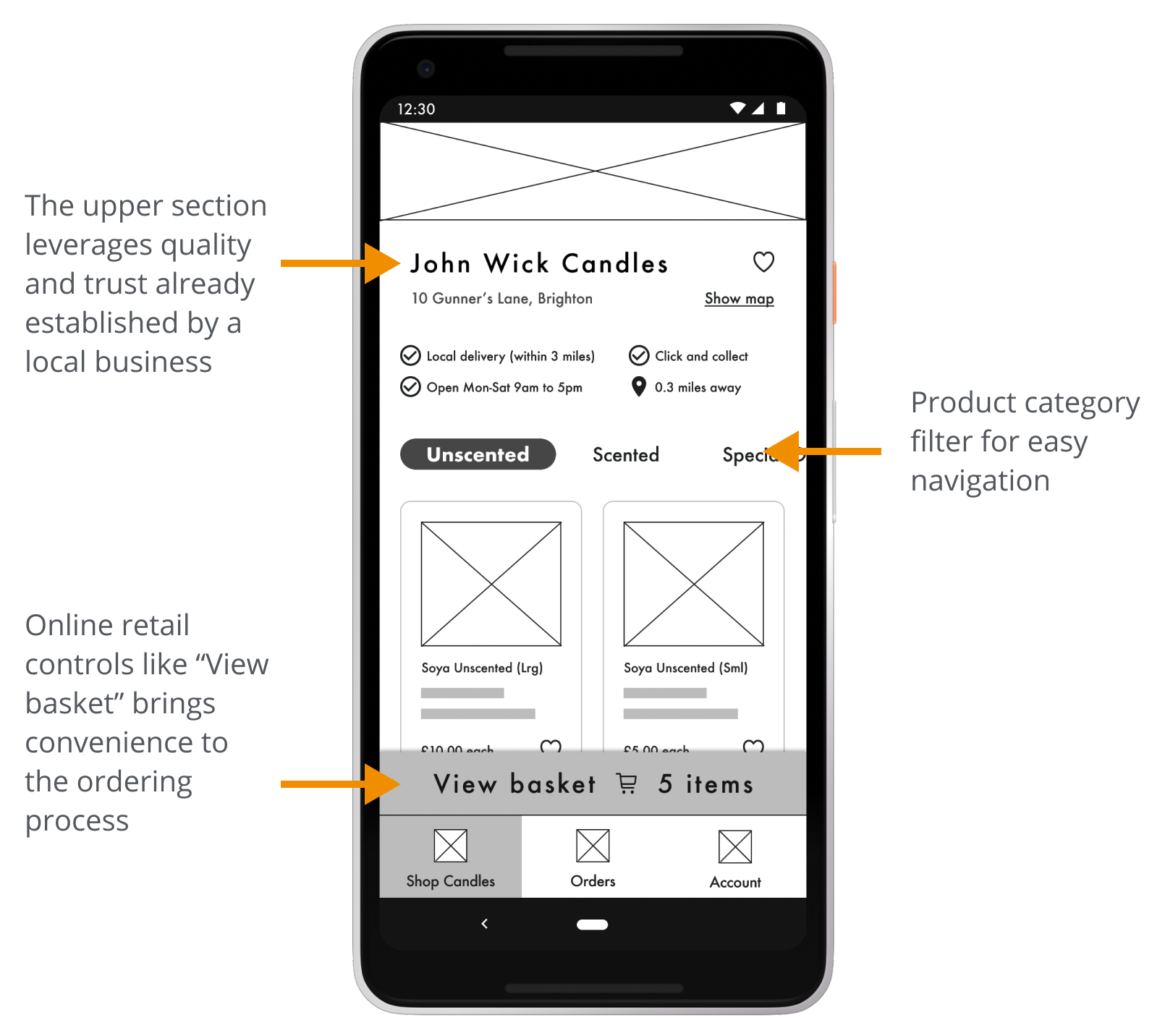Candle Libre
Designing a mobile app to brings e-commerce to local candle businesses.
My Role: UX Research & Design
May – September 2021

Project Overview
Candle Libre is a new app designed to help people find and place orders for quality candles with local suppliers. Candle lovers, stores and makers can connect through Candle Libre to support their local economy and be kinder to the environment.
You can download the full presentation slides here.
The Problem
Candle lovers have difficulties finding and buying quality candles online without harming local businesses and the environment.
The Goal
Design an app that allows users to order candles online for local delivery or pick up from local businesses and minimise environmental impact.
My Role
Responsiblities
Understanding the User
User Research Summary
I conducted a series of interviews with candle shoppers in my local city to understand their needs and motivations. A primary user group identified through research were adults in their 40s to 60s who have a spiritual connection with candles and prefer to shop at local stores.
Research with the user group confirmed initial assumptions about customers benefitting from the convenience of online ordering, although it also revealed some reluctance in using e-commerce giants (e.g. Amazon) owing to the challenges in finding authentic, trusted and quality candles. Other problems included concerns for environmental impact and the threat to small businesses in their area.
Pain Points
1. Quality
The quality of candles is not assured and only becomes apparent when burned.
2. Trust
People trust products they know well, but are distrustful of ordering online for risk of fakes.
3. Information Architecture
Overwhelming choice and poor categorisation often makes products difficult to navigate.
4. Environment
Shoppers prefer to buy from local shops and enjoy the convenience of deliveries, but see online retailing as a threat to small businesses and the environment.
Persona

Problem Statement
Stephanie is a busy home-working adult who needs convenient access to quality candles because they have no time to risk disappointment on poor quality and fake products.
User Journey Map

Starting the Design
Paper Wireframes

Digital Wireframes

Low-Fidelity Prototype
The primary user flow involved entering your location, choosing a local store then ordering candles for local delivery or collection.

Usability Study Findings
Round 1 Findings
- Users want to easily recognise stores
- Users wanted more information on stores and products
- Users wanted a local delivery option
Round 2 Findings
- Users wanted consistent navigation
- Users were more likely to use mobile payment as their main method for a rapid checkout
- Users wanted information on products before entering their postcode
 DaveCheung
DaveCheung